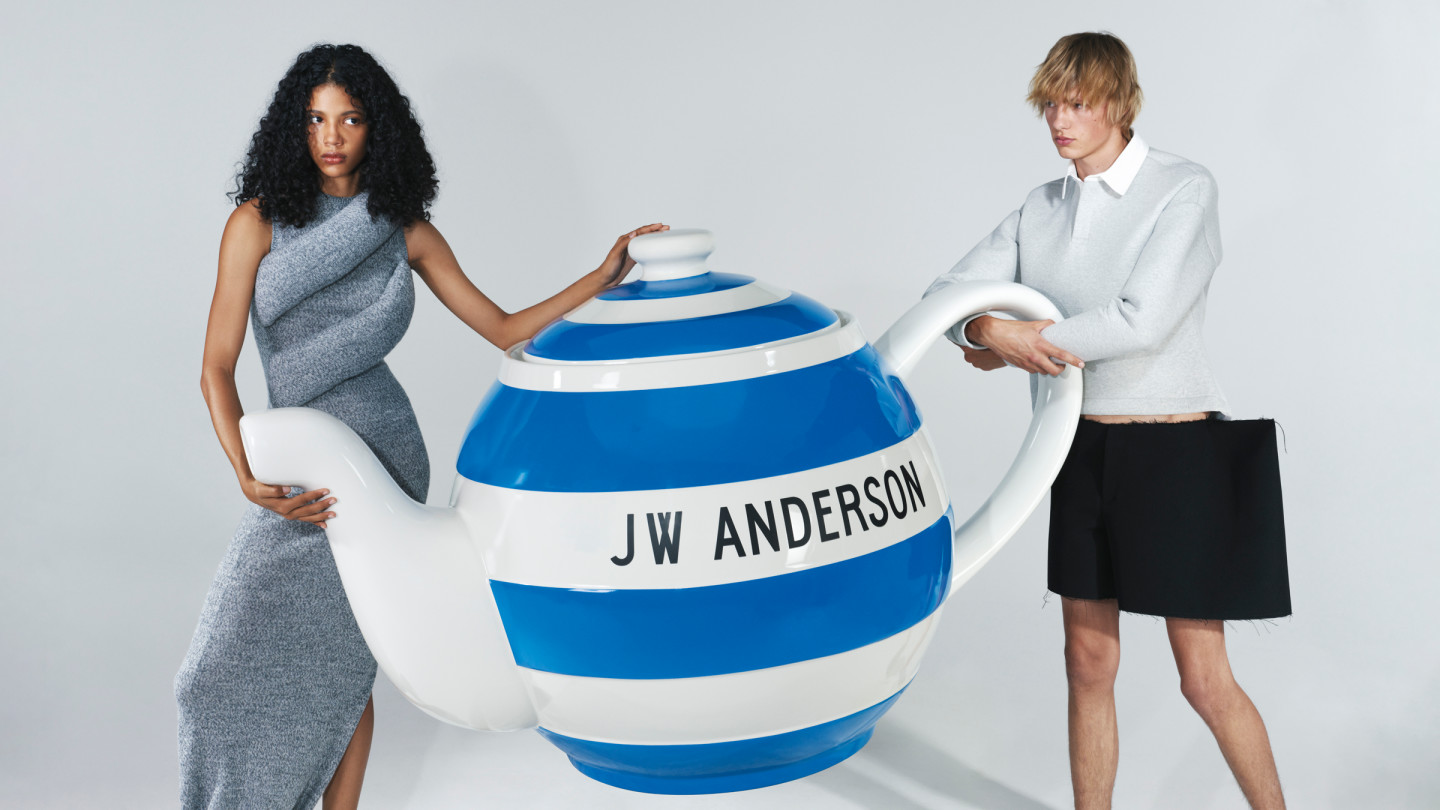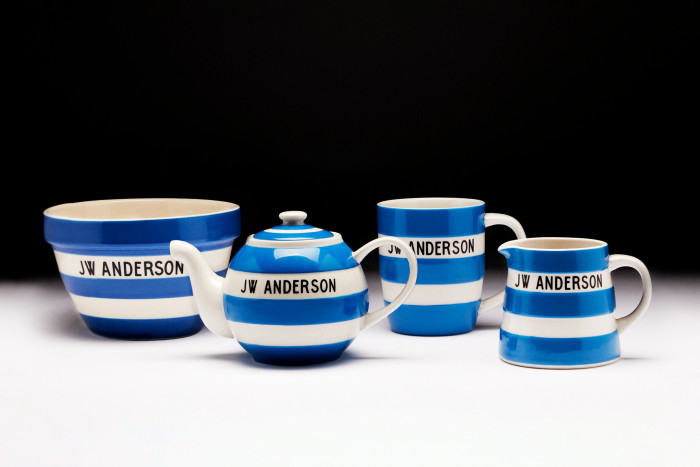How Cornishware got its cool back

Roula Khalaf, Editor of the FT, selects her favourite stories in this weekly newsletter.
“It was fashionable 50 years ago and I think it will be fashionable in 50 years’ time,” says Rebecca Rickards, of the bold blue-and-white stripes that characterise her family’s pottery range, Cornishware, which turns 100 this year. The hand-painted stripes are a British homeware staple, a 20th-century design icon and now a fashion sensation – Cornishware made its Milan Fashion Week debut when Jonathan Anderson referenced the range for the SS24 show of his label JW Anderson. Rickards and the team prepared more than 500 teapots, mugs, cereal and pasta bowls for Anderson to use as invitations to the runway show, which played out atop a blue-and-white striped carpet.
“It was lovely seeing Cornishware step into the world of fashion, which it’s never done before,” says Rickards. “And it was wild to see bloggers and influencers dressed in blue and white stripes – you realised that the power of the Cornishware brand had filtered through.”

Cornishware was founded by British potter TG Green, its stripes inspired by the Atlantic Ocean and the Cornish clouds – at least according to a ’30s marketing campaign. As housewives took control of the kitchens in the ’20s and ’30s, the decorative kitchenware became popular enough to resist the economic threat of the Depression, when the buoyant stripes kept TG Green afloat. Through the ’50s and beyond, the brand experimented with new colours, creating “Cornish Red” in a bid for the American market. Times got tougher, however, and in 2007 new investors, among them Rebecca’s father Charles Rickards, saved the business from closure. Its biggest markets outside of the UK are now the US – where “Cornish Red” remains a hit – Australia and South Korea.

The company, consisting of a 28-person team, defied the crisis of the pandemic, finding huge success on Instagram, where its biggest audience is 25- to 35-year-olds. “Our business doubled in size. I think everyone was at home looking at their mugs thinking, maybe I need a new one,” laughs Rickards. “It did put a bit of pressure on the pottery, but we worked really hard to produce as much as possible to keep up with demand.”
Cornishware is not actually made in Cornwall but made from Cornish clay at a pottery in Somerset, where it has been based since 2017. “We are bringing everything back from overseas to be made on our farm here,” says Rickards. “It’s very hard to market something that is British and not made in Britain.”


The brand appeals to a collective nostalgia, especially in its centenary year when it is re-releasing designs from the ’50s including spice jars, a cake stand and a rolling pin, which will join its regular collection (mugs from £11, teapots from £27.50, set of four bowls, £64). It has also created a new colour, “Cornish Blackberry”, inspired by a limited-edition platinum jubilee mug. The brand launches new products every few months. “We like to nod to the past as well as keeping it fresh,” says Rickards.
“Cornishware is a British household classic, a ceramic that any person would have in their home,” says Jonathan Anderson. “One of the main references from JW Anderson’s last show in Milan is the everyday textures, patterns and conformities of the home, particularly a British home. This is why we decided to do a nod – from the invites to the fashion runway – to the blue and white stripes.”
Recently returned from a pilgrimage to the giant Cornishware teapot at the JW Anderson store in Milan, Rickards reflects: “We are a small business in the West Country, and things like this don’t happen every day.” Though as the business grows larger and larger, who knows where the striped ceramics will turn up next?
Comments